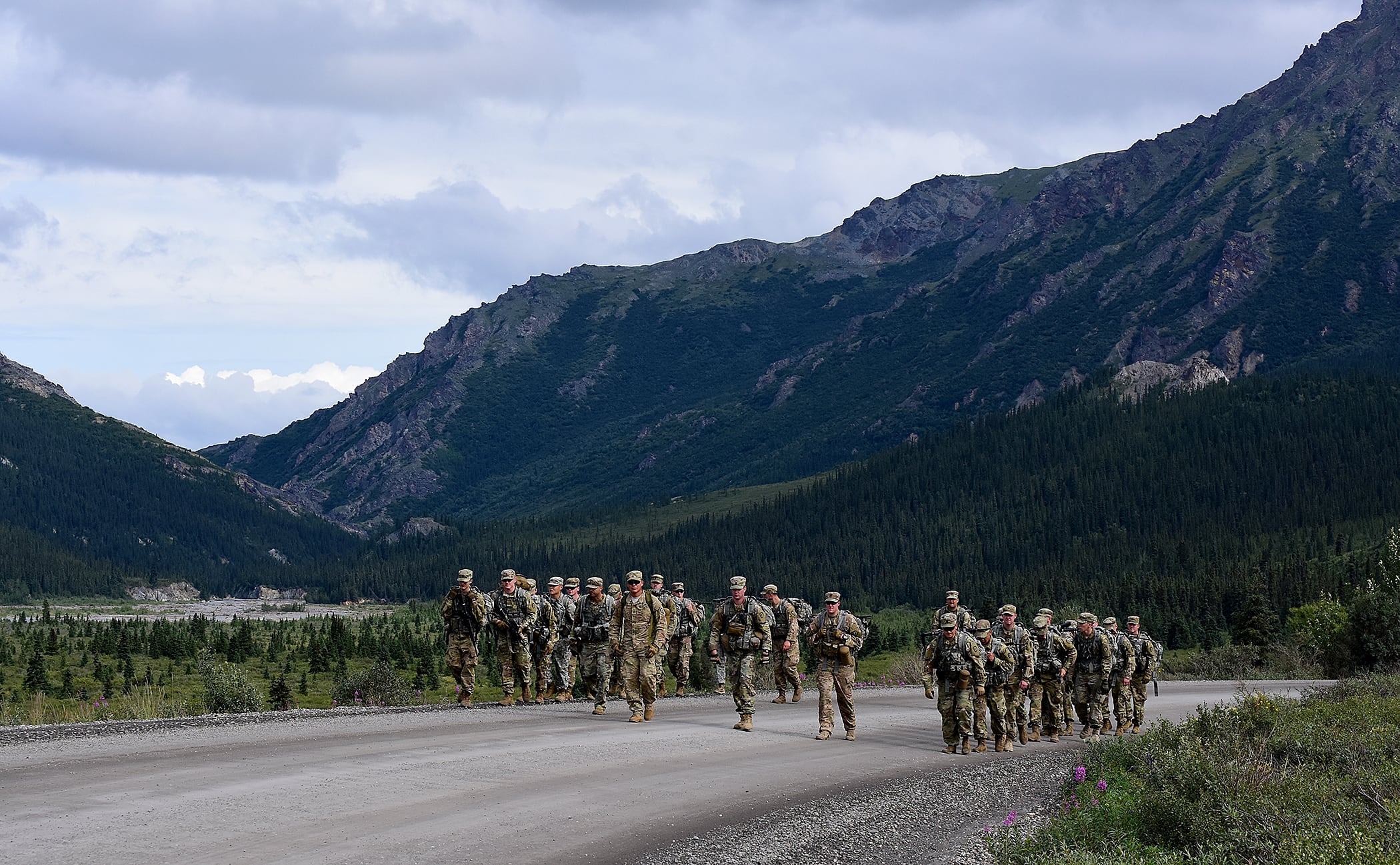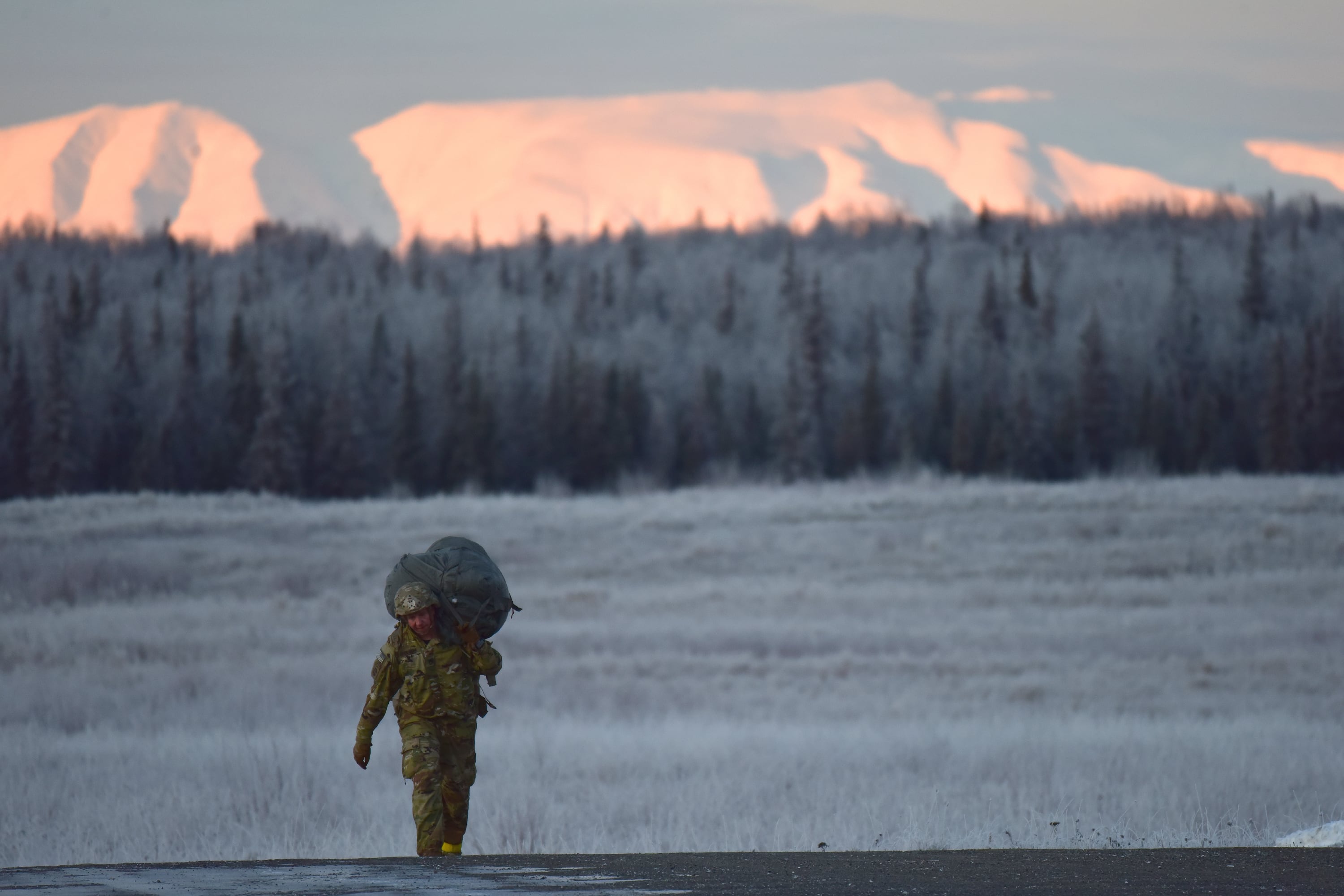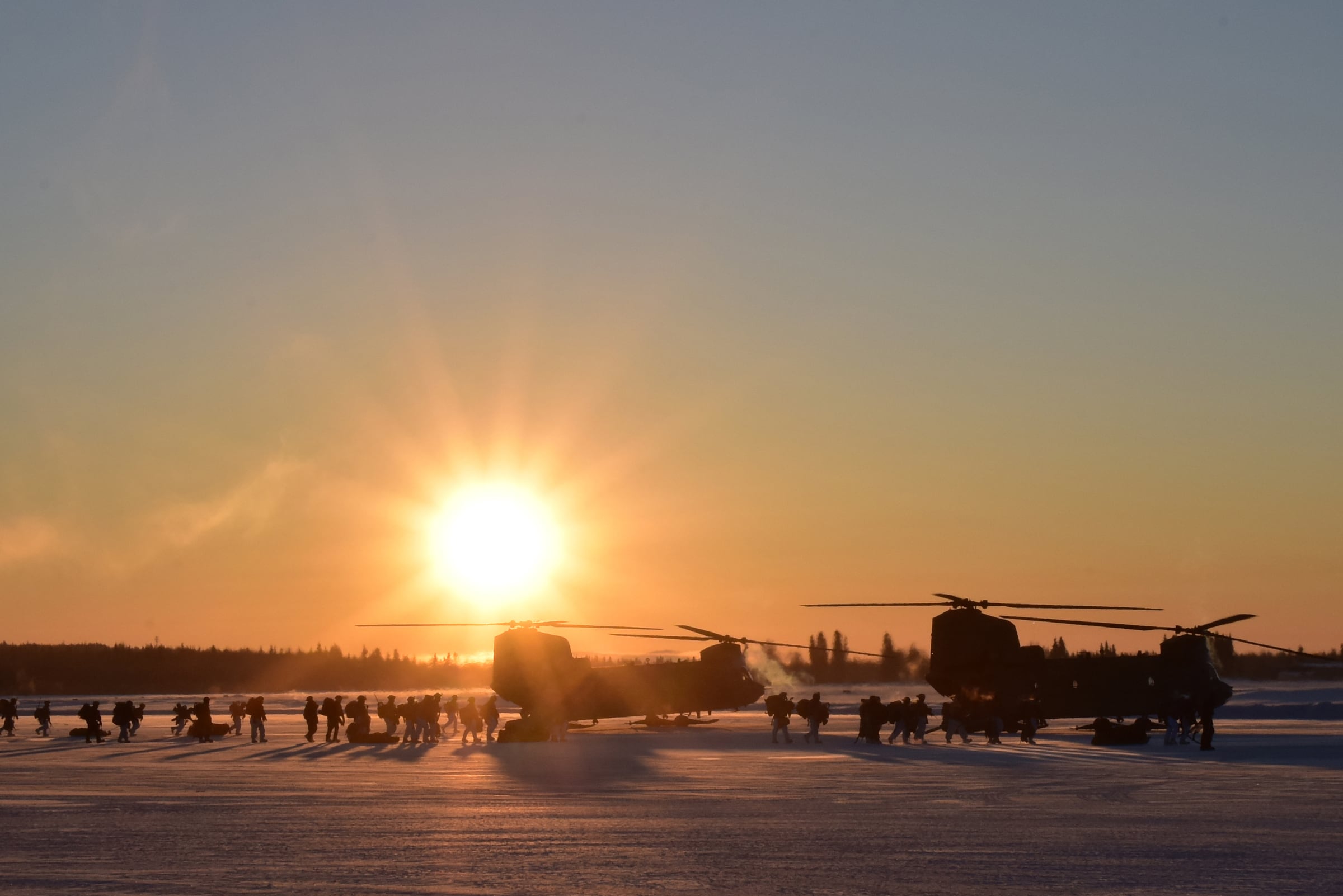A command team from the Hawaii-based 25th Combat Aviation Brigade visited one of their battalions at Fort Wainwright, Alaska, in January to hold sensing sessions in which troops discussed their opinions on mental health, loss and grief.
The trip came after two soldiers from 1st Battalion, 25th Aviation Regiment, died by suicide in late December and January, and a third soldier attempted suicide in that same time period, according to two people and an email from a unit official obtained by Army Times that describes the three incidents.
An Army Alaska command team also visited the post “a day after the second death,” said spokeswoman Lt. Col. Catina Barnes, who added that “more similar meetings are planned.” But Barnes said she could not discuss the deaths, or confirm they were suicides, due to ongoing investigations.
Army Alaska has acknowledged grappling with suicide in the past. It’s a problem that has disproportionately affected Fort Wainwright in the remote interior of Alaska, where the long, dark winters can be difficult for some people’s mental well-being.
In January, commanders in Alaska ordered alcohol sales to cease after 10 p.m. on Fort Wainwright and Joint Base Elmendorf-Richardson in an effort to curb excessive drinking and related harms, such as drunk driving incidents and suicide.
One of the individuals who discussed the deaths with Army Times worried that by not being more open, the Army was “continuing a stigma” associated with suicide.
Command officials said they’re limited by privacy guidelines from discussing suicide numbers publicly.
“Unfortunately, what is often perceived as the Army not being transparent is simply a factor of us following the rules and regulations that are in place to protect the soldiers’ privacy,” said command spokesman John Pennell. “We do acknowledge every death locally and within the affected units to help our people with the grieving process.”
RELATED

Army Alaska shared the number of deaths it had in 2020 and so far in 2021, but declined to lay out the number of suicides, citing restrictions under the Health Insurance Portability and Accountability Act.
In 2020 there were seven deaths among Fort Wainwright soldiers — three were traffic incidents, one was a non-combat death in Iraq and one was from a sudden illness unrelated to coronavirus. The two remaining cases are still under investigation and the medical examiner has not ruled on their causes. This year, Fort Wainwright has had one death, which is also under investigation.
Joint Base Elmendorf-Richardson had five soldier deaths in 2020 and none this year. All five remain under investigation, the command said.
Fort Wainwright can be a difficult assignment for soldiers, especially those who are not interested in outdoor activities like hunting or fishing. Though the days are long during the summer, winter offers less than four hours of sunlight at its peak.
Strict coronavirus precautions that limited off-post dining and drinking, as well as indoor gatherings, compounded the isolation some troops at Fort Wainwright felt, one person there said, though those restrictions eased last week.
“I lost people in Afghanistan, and I lost a very good friend to suicide after our deployment,” the person added. “We’re not really in a high ops tempo war anymore. We have the time to focus on soldiers, so why aren’t we taking that time? Why aren’t we trying to figure out how we can help?”
RELATED

The sentiment underscores a gap between the quality of life improvements officials say are being made, and the reality soldiers say they’re experiencing.
Army Alaska commander Maj. Gen. Peter Andrysiak said in a video message Tuesday that the Army has put $170 million into Alaska posts, with millions more expected. The money has gone to renovated barracks, new family housing, improved gyms and a better shuttle service at Fort Wainwright.
The chief of staff and secretary of the Army have also “visited our installations in Alaska no less than seven times over the last year,” Andrysiak said. “The time they’ve spent here on the ground has shown them first-hand the challenges of living and working in Alaska.”
Some of the more stringent coronavirus restrictions also lifted last week. Fort Wainwright had been at Health Protection Condition Charlie, the second most restrictive level. Now, the post is at HPCON Bravo, which allows more travel around and off-post.
“We understand it fosters a sense of anxiety among people,” Pennell said of the HPCON levels. “You’re restricted in where you can go and who you can be around. It’s difficult. So that’s why we work very closely with the mental health folks.”
The Army dispatched a public health team to Fort Wainwright in 2019 to conduct an epidemiological consultation after a cluster of suicides there.
The consultation surveyed 4,000 soldiers and found that about 10 percent of them wanted to hurt themselves over the previous month. Roughly one-third of soldiers described their sleep quality as poor, with about 40 percent of those citing the excess light in the barracks as an issue.
To get after those issues, the command said they were working to offer training schedules with more predictable time off, vitamin D supplements, black-out curtains and an increased food allowance.
Andrysiak has also said that he wants Army Alaska to receive more volunteers from initial training bases, rather than rely solely on mandatory assignments.
“How do we query [trainees], raise their hand and get them up here?” Andrysiak said in December. “Versus now, it’s a little bit more of a random process who winds up here.”
The Veterans and Military Crisis Line provides 24/7 confidential support for service members and family members. It can be reached at 800-273-8255, by texting 838255 or online chat.
Kyle Rempfer was an editor and reporter who has covered combat operations, criminal cases, foreign military assistance and training accidents. Before entering journalism, Kyle served in U.S. Air Force Special Tactics and deployed in 2014 to Paktika Province, Afghanistan, and Baghdad, Iraq.









